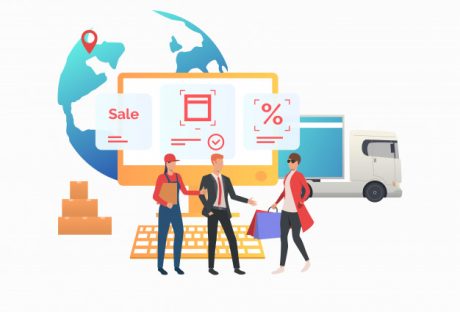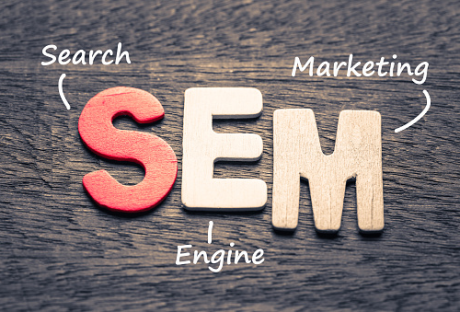Unless you have been living under a rock or a remote island, you will know that video marketing is an important part of every modern business. So, it shouldn’t be shocking that video marketing has become a rage in the market.
You should expect that online users will cross the 2 billion marks in the next few months.
Did you know that YouTube hosts 1 billion unique visitors every month. This means the popularity of video marketing is not hidden from anyone in the world.
With several social networks having launched the video ads, the responses have compelled other business owners to join the bandwagon. It is expected that more than 75% of internet traffic will be filled with videos in the next year.
As a modern business owner, if you haven’t adhered to the idea of relying on video marketing, you’re not modern and certainly not going in the right direction. Here, we will guide you through a few ways video marketing can expand your business audience:
1. Present Your Product
Make a concise video to let your audience know about the product or service you have to offer. Just like there is a difference between reading a science chapter and attending it in class, the audience develops a better understanding of the product when they have somebody tell them about it.
Make sure to educate them about the benefits of your product or service. If you make a good quality video with information about the audience’s interest, you will quickly witness an increase in the number of visitors.
We suggest you use a teleprompter, which will make your video more professional. Furthermore, as they flock to your website, most of them might convert into customers quickly.
2. Offer Instructions
In today’s time, customers love to sift through video tutorials because they guide them in detail about using the product. For example, If you debut with “How to use this shampoo” or ‘How to unbox this phone,” customers will quickly get inclined towards viewing it. This way, you will not only win the customer’s trust but will also satisfy them quickly.
Not to mention, customer loyalty is a very important factor in today’s world, so you must strive for it.
3. Explain Why You Stand Out
Let’s take a simple example to elaborate on this concept. If your company is about to launch a new shampoo, you should know that there are hundreds of shampoo options out there already.
To impress the customers, you will have to tell them about how your offering is different from the other. Unless you don’t have something valuable to offer, customers will not trust your brand.
Visit Soflostudio.com to get a professionally developed video for your video tutorial. Only a top-notch video shooting firm will sift you through the right way to promote your product.
4. Equipping the Video with Special Content is a Good Idea
A modern customer is not only concerned about the core product but also expects the company to value them.
So, do you have anything else valuable for the new clients? Adding plenty of informational articles on the main website is not going to have a strong impact as strong impact as a video message will.
For instance, if you want the customers to know about what goes on behind the scenes in the manufacturing of your product, you can shoot a 3-minute video and give them short glimpses.
5. Explain Your Story
Instead of filling the landing page of your website with an abundance of content, it is best to let the customers know about it through a video message.
In fact, most people ignore the “About Us” section because it is too dull. Record a video with the chairman of the company, and don’t forget to include glimpses of the journeys of veteran employees in the company.
Explaining the founding story of the company will have a strong impact on the minds of the customers.
6. Explain the Vision and Mission of the Company
Every stakeholder of the business is interested in knowing about the short-term and long-term goals of the business. This is because stakeholders must stay in touch with the company for a certain time.
Only if they are in coherence with the goals of your firm will they decide to stick to it. This is why explaining the vision and mission of the company through a short video can make a difference to the reputation of your company.
7. Video Marketing is the Need of the Hour
In simple words, video marketing is not an option but the need of the hour. As soon as a new product or service is launched in the market, customers flock to YouTube, and the social media pages of the business to find video messages.
If you don’t rely on video marketing, your competitors will stand out to the customers. Secondly, you need to realize that video marketing is cheap and can save on the costs of traditional advertising.
Starting your Digital Marketing Journey? Why you Should Focus on Digital Marketing
Digital marketing is not a fad. It’s the new spine of business success in this era and beyond.
If you’re wondering where to begin, here’s your cue. Billions of users are online daily, and you shouldn’t just want to create an online space; you need engagement for your business.
Here’s why digital marketing should be your first focus as you launch out.
1. Reach a Wider Audience
The internet is global, and so is your audience. Unlike traditional marketing, which often limits you geographically, digital marketing allows you to reach people anywhere in the world.
Whether it’s through social media, search engines, or email marketing, the potential for audience growth is massive.
Think of your product getting discovered by someone on the other side of the globe; that’s digital marketing.
2. Cost-Effective Advertising
Traditional marketing methods like TV commercials or print ads can be expensive, especially for small businesses.
Digital marketing, on the other hand, offers a variety of affordable options.
With tools like social media advertising and pay-per-click (PPC) campaigns, you can reach thousands of potential customers without spending a fortune.
Plus, you can set your budget and adjust it as needed so you don’t overspend.
3. Measurable Results
Digital marketing is probably the most measurable form of marketing. We can see, in real-time, what is working and what isn’t, and we can refine our strategies accordingly.
How many people are visiting your site?
Did you make sales this week?
How long do they stay on your site? What were the reasons people returned a product?
With online analytics, you can even measure specific goals you want to achieve for your website or blog (i.e., analyze conversions using built-in tools on platforms like Facebook Ad Manager or Google Analytics).
In other words, digital marketing will help you understand how your potential buyer base behaves and uses technology to make informed decisions.
Final Thoughts
The world of digital marketing may seem daunting, but the reality is that digital marketing is an essential component of any successful business in today’s world.
You don’t have to do everything at once. Start with a few key tactics and build from there.
The most important thing is to begin.
Your future customers are already looking for your product or service online. The question is, will they be able to find you?
Read Also:






















